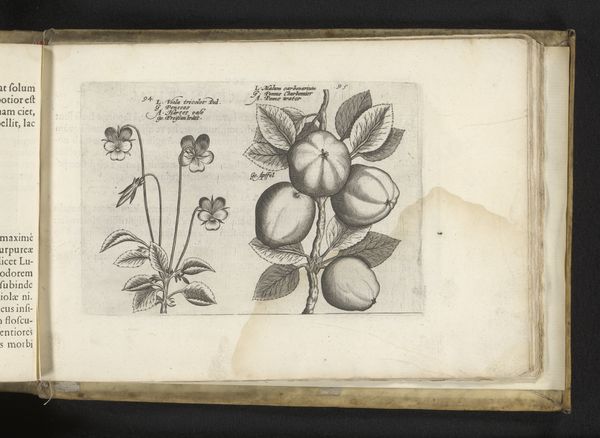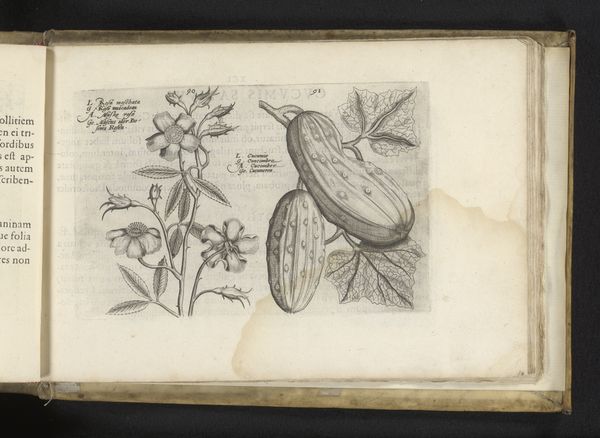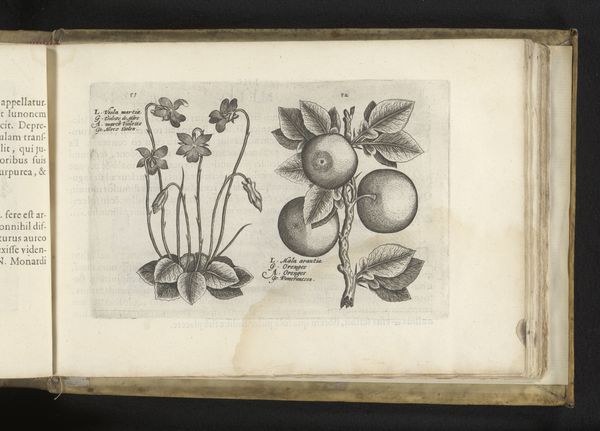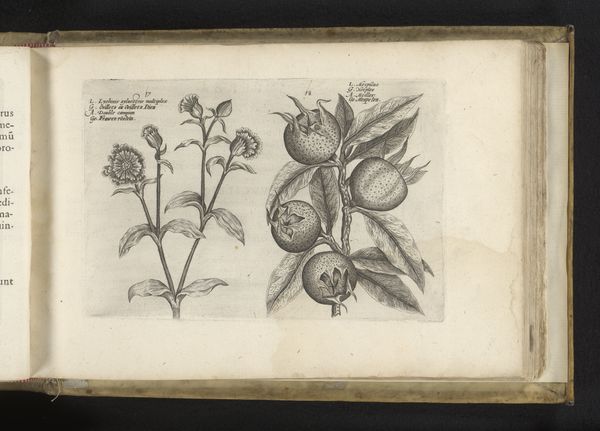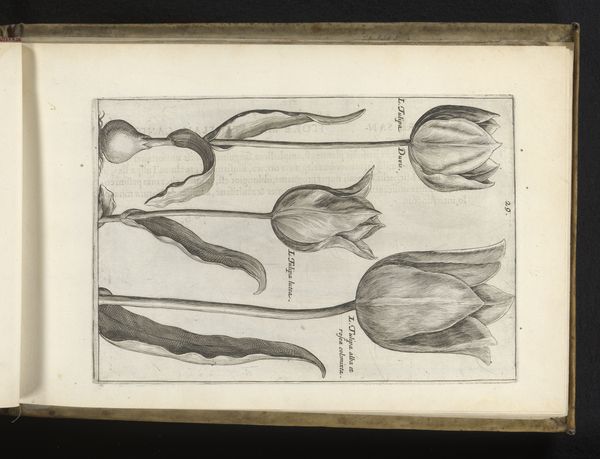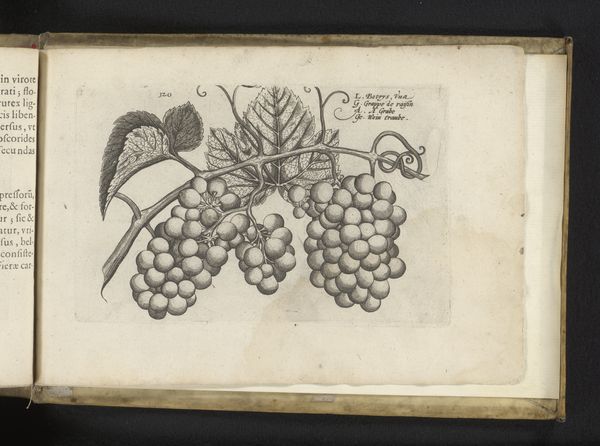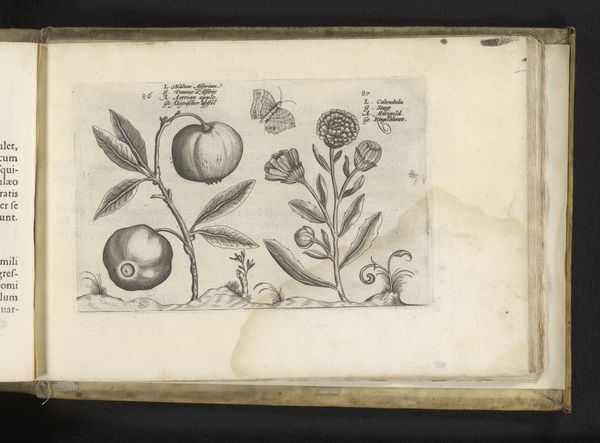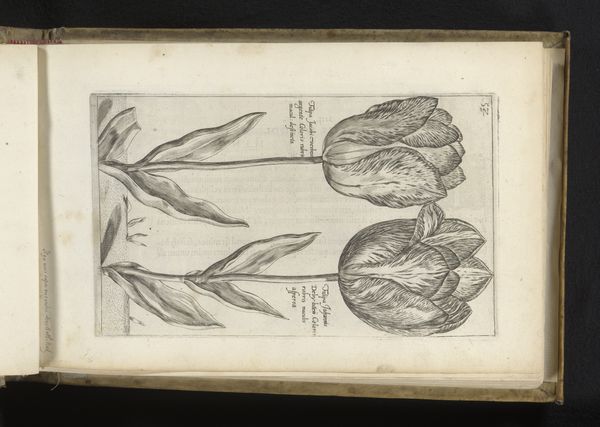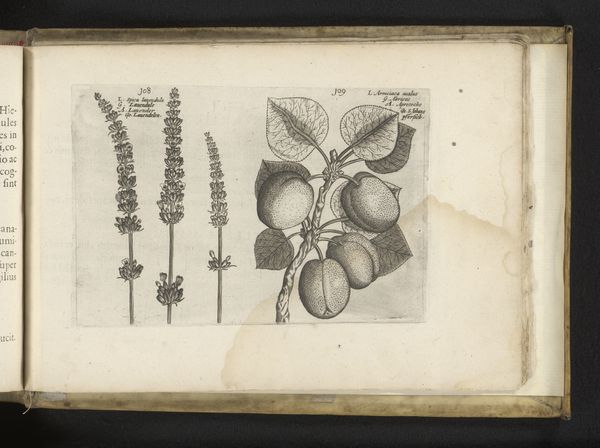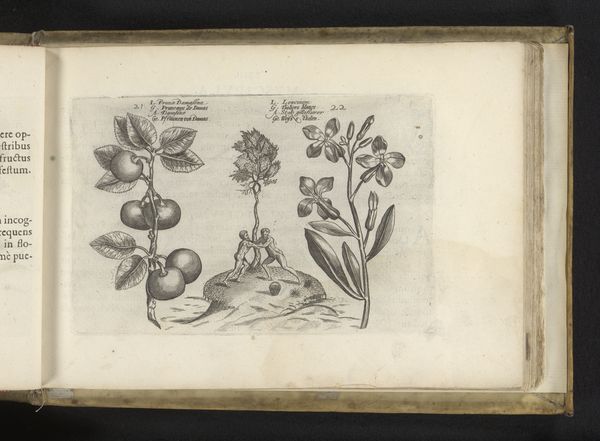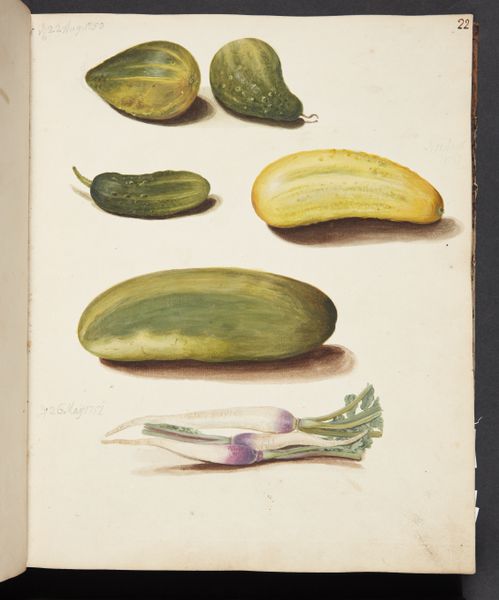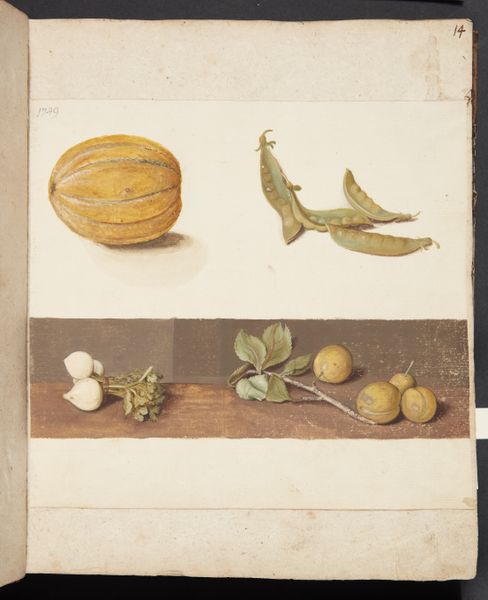
print, engraving
#
aged paper
#
toned paper
#
light pencil work
#
homemade paper
#
dutch-golden-age
# print
#
old engraving style
#
sketch book
#
flower
#
personal sketchbook
#
pen and pencil
#
line
#
sketchbook drawing
#
sketchbook art
#
engraving
#
realism
Dimensions: height 128 mm, width 185 mm
Copyright: Rijks Museum: Open Domain
Curator: At first glance, the composition is striking in its simplicity—two melons rendered with delicate precision against the stark page. There's an understated elegance to the tonal values created through hatching and the restrained linework. Editor: This engraving, titled "Meloenen", from 1617 by Crispijn van de Passe the Younger and housed in the Rijksmuseum, prompts questions about the representation of food and luxury in the early 17th century. Considering Dutch Golden Age society, the prominence given to something as seemingly simple as melons may signal a growing obsession with opulence. Curator: True, but before delving into the societal implications, observe how Van de Passe uses light to sculpt form. See the subtle variations in shading, creating volume, and delineating surface texture. The cross-hatching on the rounded melon in the front suggests a rough exterior compared to the smoother, elongated one beside it. Editor: I appreciate the tactile quality achieved with line. But, also, consider the gaze through which the artist—and by extension, the viewer—engages with these melons. Were these imported goods? Are they signifiers of exoticism in Dutch society? Are we invited to indulge our own privilege through representation? Curator: I understand your points. But is it possible we are ascribing layers that distract us from his talent? His lines aren't just documentation; they communicate his engagement with rendering his subjects. He uses etching to mimic tonal gradients – essentially painting with incisions! Editor: Certainly, we can acknowledge artistic skill while simultaneously unpacking the deeper meaning embedded in the imagery. Consider the act of preserving and idealizing such still life. In what ways did Dutch trade practices depend upon a burgeoning artistic celebration of these commodities? Curator: I see your position, yet this discussion has highlighted the incredible intersection between observable detail, craftsmanship, and interpretive frameworks. A truly worthy exercise for the viewer. Editor: Indeed, engaging with both the visual elements and contextual history invites audiences to explore beyond mere visual analysis, to the work's historical position.
Comments
No comments
Be the first to comment and join the conversation on the ultimate creative platform.
